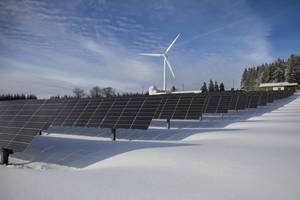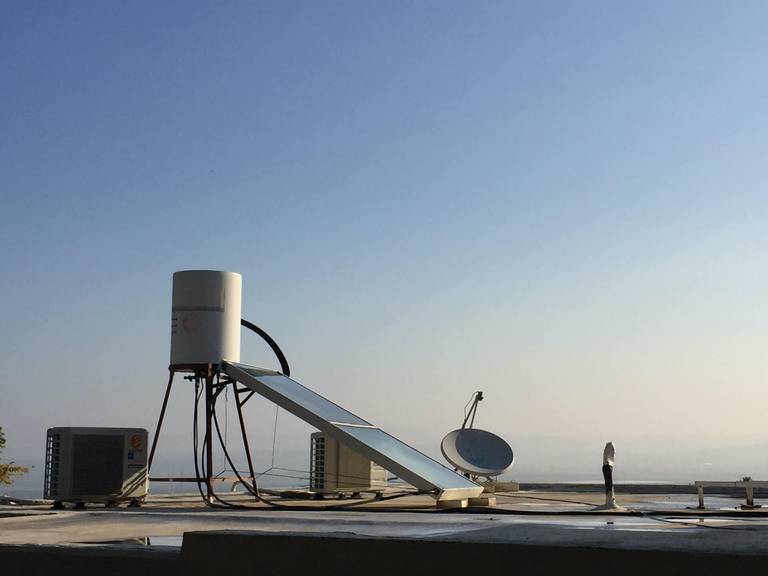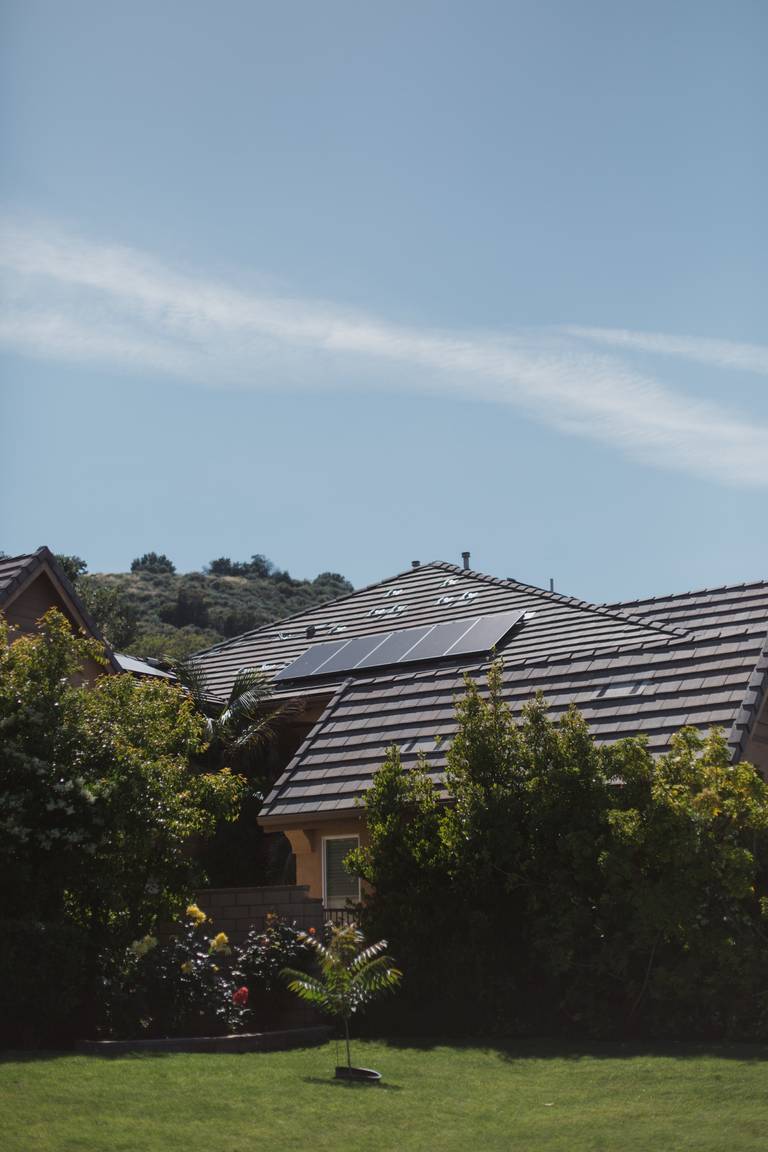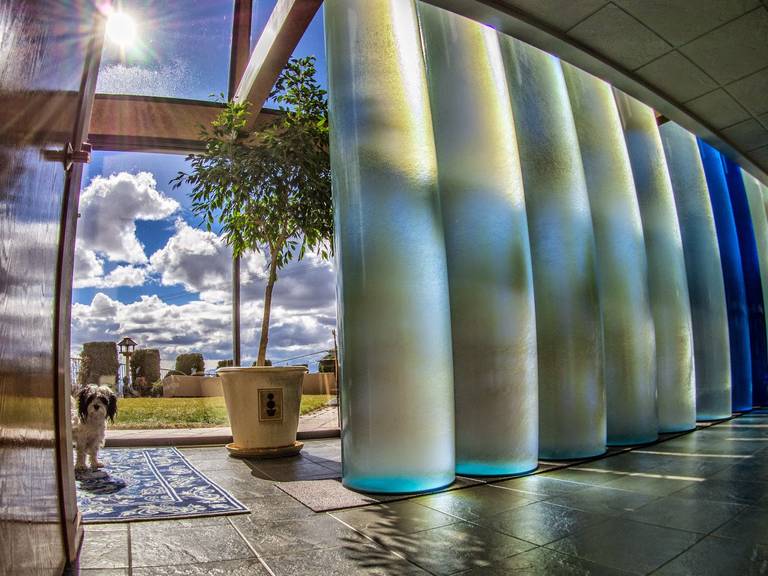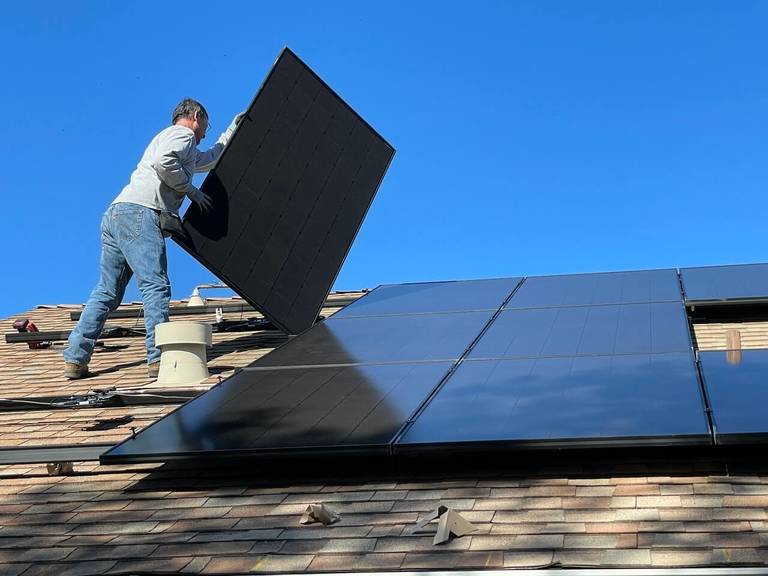Why You Should Consider a Solar Powered Greenhouse
When it comes to heating their greenhouses, gardeners are always looking for better options that offer unique improvements. Solar technology is a good match for their needs, especially since there are better solar greenhouse options coming online all the time.
So let's start with an overview. Solar-electric heaters are available, but they're incredibly inefficient, since they need to first convert solar energy to electricity to produce heat.
There are better solar heating for greenhouse options available, starting with hot water solar panels, so we'll look at those first, then shift to their photovoltaic cousins.
After that we'll consider heat exchangers, and just for good measure we'll throw in a look at thermal mass systems that can be used to give you a solar powered greenhouse heater.
We'll also break this down into a deeper dive-i.e., a definition of what the solar heating for greenhouses technology is, how it works, some of the cost issues, and what the advantages and disadvantages are.
That way you'll have the necessary information to make the best decision to fit your needs and make the sun your new best friend in the process.
Solar Hot Water Panels
Using hot water to heat a greenhouse is an evergreen option (sorry) that's been around forever, but solar panels offer some unique advantages that are hard to duplicate using other solar heating systems for greenhouse applications.
The way they work is pretty basic, too. The sun warms water contained in panels, and after that the water can be further heated using a boiler. Once that happens, a pump circulates the hot water through tubes embedded in the greenhouse floor.To save resources, once the water is cooled it is returned and run through the cycle again.
The major issue with hot water solar panels is the setup, which is typically done in tandem with building the solar powered greenhouse.
Simply put, it's expensive. Unless you're a plumber, you'll probably need to hire one with experience in building this kind of system. And that will probably cost you anywhere from $10-20K, depending on the size of your greenhouse.
The alternatives aren't pretty, either, financially speaking. You could use a hydronic heating system, but if you do you'll need a boiling system to circulate the heated water properly. And you'll need to spend thousands of dollars and alter the setup of your greenhouse completely.
If you want to go back in time, you could also hold water in barrels and use a simple pump to circulate water under a stone tile floor. It's cheaper, but be prepared to invest plenty of hours in the upkeep.
To sum up, solar hot water panels are a much better option. They're energy-efficient, they're great for the planet and they're awesome for your greenhouse.
The cost factors vary. Hydronic systems MIGHT be less expensive than propane or forced-air furnaces, but that will depend on the size of your greenhouse, how much sun it gets, and how well your greenhouse is insulated.
Photovoltaic (PV) Solar Panels
To most people, these panels are probably what comes to mind when they hear the term "solar panel."
They directly convert sunlight into electricity, which is wonderful, but it still leaves the issue of how to convert that electricity into heat for your solar heated greenhouse.
That means we're looking at a two-step conversion-sunlight-to-electricity, then electricity-to-heat. Which is very inefficient, primarily because you lose energy in each step.
The setup isn't always pretty, either. You can't put PV solar panels on top of the greenhouse, because that would block the sunlight your plants need to grow.
To solve this problem, you can either set the PV panels up on the ground near your greenhouse, or on an adjacent building. The panels also have to be connected to a power grid to distribute heat to your greenhouse.
The size of your greenhouse also comes into play. You'll need to figure out the right amount of solar panels you need, and to do that we'll have to play "math" for a moment.
Typically, a PV solar panel system generates 10-35 kilowatt hours per year. Meanwhile, a typical greenhouse required 1 kilowatt per square foot of energy every year.
That means a greenhouse that takes up 10,000 square feet of space will need 273 by 5 feet solar panels to provide the heat it needs [this unit on this number makes no sense, needs to be clarified]. That's a lot of solar panels for what amounts to a fairly small space!
So what does it all mean?
Simply put, PV panels are so inefficient when it comes to generating heat, you probably won't save much money on energy over time. In fact, it can get quite pricey to heat a greenhouse year-round, especially during those cold winter months. There's another disadvantage that comes into play as well.
Given the fact that the sun isn't always out in the colder months, the PV panels may fall short when it comes to providing the amount of heat your plants will need.
That means you'll need an additional heating source, which means your whole situation may get even more inefficient.
There is a side benefit, though. You can use the electricity from the PV panels to run fans, pumps, lighting, and irrigation systems in your greenhouse, which may offset some of the costs.
Heat Exchangers
Definition first: A heat exchanger takes stored heat and circulates it throughout the greenhouse when it gets cold.
One advantage to using a heat exchanger is that heat can actually be stored very easily in the soil that's inside your green house. The process starts when the heat exchanger draws the heat to the soil-or some other thermal mass-during the day. Then, when the external temperature drops, the stored heat can be circulated to heat the greenhouse.
The setup for a heat exchanger is actually fairly simple. You'll need to set up underground pipes and connect them to the heat exchanger. During the day, the fan from the heat exchanger will draw hot hair from the greenhouse through these pipes.This cools the greenhouse air and heats the soil, and that heat energy can be used later when the greenhouse actually needs it.
During the colder months or at night, the heat exchanger system can draw heat back up from the soil, then circulate the warm air through the greenhouse.
In addition to the simplicity of the system, a heat exchanger system has a couple of other important benefits. You probably won't need a professional to install it, and the system itself is inexpensive.
All of the heat for the greenhouse comes from the sun, so you get to use natural energy that helps the planet and your bank account.
You'll still need electricity to run the fan that the heat exchanger uses, but you can also consider the possibility of using a PV solar panel to provide the electricity that runs the heat exchanger.
The major disadvantage of a heat exchange system is simple-you're relying on the sun. That means a cloudy day could hurt your plants at night because you're not storing enough heat.
And during the colder months the likelihood of multiple cloudy days gets higher, which means you have to install some kind of backup system to protect your plants.
Thermal Mass
To some extent, the term "thermal mass" is self-explanatory. It simply means you use materials that store thermal energy during the day-e.g., soil, water, stone, or paving bricks-then use the released heat at night.
Thermal mass has two basic advantages-it's easy to install and simple to put together.
The most basic example would be water barrels. You can stack several large water barrels in direct sunlight during the day, and at night the stored energy of the sun will be released from the water in the barrels to heat the greenhouse.
There are other creative variations, too. One would be to use fish tanks, which allow you to raise fish by putting them in the greenhouse. You can add a heat exchanger to the system, and the advantage of doing this is that you'll get better heat circulation at night.
The system is also inexpensive. Your utility bills will stay the same, and a thermal mass system is surprisingly effective when it comes to heating at night. Your plants will usually be fine at night, even if the outdoor temperature drops below freezing.
The disadvantages of a thermal mass system are fairly straightforward. There's no fan, so the heat may not circulate evenly. And if the circulation is especially uneven, you may wind up with some plants that get too much heat while others don't get enough.
This system also relies on the sun, which means you'll have to account for multiple cloudy days that may or may not be seasonal, depending on where you live. That means you'll need a backup system, so the cost of your thermal mass solution just went up.
Bullet Point List - Pros and Cons
Solar Hot Water Panels
Pros
- Energy efficient
- Very little maintenance and upkeep
- Very quiet
- Keeps the temperature very consistent
Cons
- Usually requires professional installation
- Expensive to install
Photovoltaic (PV) Solar Panels
Pros
- May offer cost savings
- Usually easy to purchase and set up
Cons
- Very inefficient heat source
- Requires a great deal of surface area to heat a greenhouse
- PV Panels can be expensive
Heat Exchanger
Pros
- Fairly efficient
- Easy to install, doesn't require professional expertise
- Distributes heat evenly throughout the greenhouse
Cons
- Uses a fan, not a boiler, so its not as efficient as a solar panel system
- Cloudy weather and sunless days can be a problem
Related questions:
Do you need to heat a greenhouse in the winter?
If you live in a colder climate, it’s very important to heat your greenhouse in the winter. Most plants aren’t able to grow naturally when it’s always cold outside. The greenhouse is supposed to provide plants with the proper environment to grow, so it can't be cold inside your greenhouse. Your plants will freeze and they definitely won’t make it through the winter.
How can I heat a small greenhouse without electricity?
There are many ways to heat a greenhouse without electricity. The best way to heat a greenhouse without electricity is by using thermal mass. This method is super simple and super cheap! Simply stack water barrels in a place that gets a lot of sunlight inside your greenhouse and let them absorb heat to be released later. If you don’t have any water barrels, you can do the same with a large compost pile, which generates heat through the process of decomposition.
How do you insulate a greenhouse for winter?
Insulating a greenhouse is important in order to store the heat from the sun during colder months and at night. Insulating a greenhouse is easy, and can be done using everyday materials. Bubble wrap is commonly used to insulate greenhouses. The bubble wrap keeps your greenhouse warm, and doesn’t block the sun. Simply staple the bubble wrap to the outside of your greenhouse, making sure to cover every inch of the surface. It’s a fairly easy and cheap method.
References used in the text:
Greenhouse Heat Distribution is very important. Achieving uniform temperature throughout the greenhouse will allow the thermostat to be set lower. For each one degree that the thermostat is lowered, there is an approximate three percent savings in fuel: https://ag.umass.edu/greenhouse-floriculture/fact-sheets/greenhouse-heat-distribution
- Dealing with the High Cost of Energy for Greenhouse: http://digitalpubs.ext.vt.edu/5dd76d0d645f4149b6dc720c2e1506e5/5f21aae4/vcedigitalpubs/1876195361568612/data/20180612_220212.241-dl.pdf
- Alternative Heating Sources in Greenhouses: http://www.middlebury.edu/system/files/media/GreenhouseFINAL.pdf

